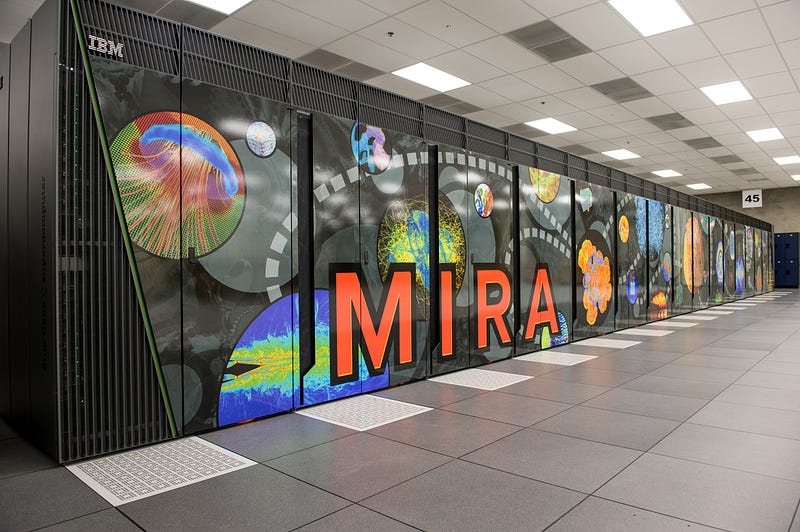Mira's Last Mission: Unraveling the Cosmos Before Retirement
Written on
Chapter 1: Introduction to Mira
Mira, the petascale Blue Gene/Q supercomputer, was developed by IBM for the Argonne National Laboratory. As it nears retirement, it is set to conclude its most significant endeavor yet—simulating the evolution of a substantial portion of our universe over billions of years. This ambitious project aims to address some of the fundamental questions of our existence.

In 2021, the U.S. is anticipated to welcome its fastest supercomputer, Aurora, capable of executing quintillion calculations per second. This remarkable speed—approximately fifty times that of current leading computers—positions it to assist in groundbreaking research, including the intricate mapping of the human brain's vast network and advancements in cancer treatment, dark matter exploration, and the discovery of new materials to enhance technologies such as batteries and medicines.
Chapter 2: The Last Journey of Mira
Despite the excitement surrounding Aurora, this article focuses on Mira, which is set to retire this year after seven years of significant contributions. As it approaches this milestone, Mira is engaged in its final assignment—The Last Journey.
“We don’t have a plan for cake or champagne—and technically we can’t have champagne on the premises,” shares Katherine Riley, director of science at the Argonne Leadership Computing Facility. “This might sound like a geeky version of a celebration, but this is our way of honoring Mira.” The scientists have affectionately termed this extensive simulation project as “The Last Journey.”
Section 2.1: A Look Inside Mira
Mira operates within the Argonne computing science building, sharing its 25,000 square feet of raised computer floor space with several other powerful machines. While it appears similar to an oversized shipping container from the outside, internally, it resembles a library filled with 48 racks, 786,432 processors, and 768 terabytes of memory.
To undertake a simulation as intricate as The Last Journey at the necessary resolution requires the capabilities of only the world’s most advanced supercomputers. The Last Journey is allocated an unprecedented 800 million core-hours—equivalent to six weeks of continuous operation on Mira—marking the largest time commitment ever granted for a single project at the Argonne Leadership Computing Facility.
Section 2.2: The Simulation Process
Mira's unique opportunity for this major allocation arises from its established retirement timeline, allowing only projects that can be completed within its remaining lifespan. The simulation commenced on August 20, starting with a model depicting the universe 50 million years after the Big Bang. It aims to simulate the subsequent billions of years of evolution to produce a high-resolution image of the universe today, based on current cosmological theories. This model will be juxtaposed with observational data from telescopes to gauge the accuracy of the underlying theory.
The simulation endeavors to answer some of the most profound questions in science: Where do dark matter and dark energy—comprising 95% of the universe—originate? Why does the universe seem to be expanding at an accelerating rate, and what implications does this have for our future?
Section 2.3: The Reliability of Mira
Katrin Heitmann, a physicist and computational scientist at Argonne, who leads The Last Journey project, emphasizes the reliability of Mira, despite its age. “Nothing fails; it just keeps going,” she states, highlighting the supercomputer’s robust network and memory capacity, crucial for managing the immense data generated by the simulation.
Mira's final task reflects its legacy of pushing the boundaries of both micro and macro sciences. It has previously contributed to advancements in nanofabrication, safety in extreme materials, and climate modeling, along with simulating stellar explosions—efforts that aid in understanding the universe's fundamental components.
Chapter 3: Farewell to a Legacy
Upon the completion of The Last Journey, Mira is set to be powered down on December 31. Its components will likely be recycled, marking the end of an era.
“I’m heartbroken,” Riley expresses regarding Mira’s retirement. This sentiment is both personal and technical, given Mira’s significant role in her career. “At its conclusion, it’s still excelling at these immense simulations. It’s remarkable that it’s performing so well right until the end.”